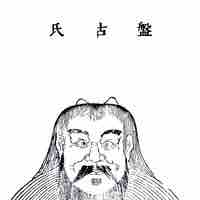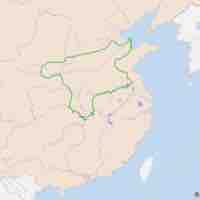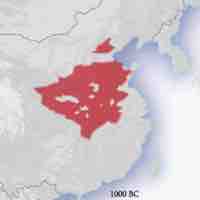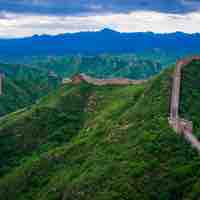Chapter 5
Early Chinese Dynasties
By Boundless

Early prehistoric China is called the "Mythical Period." It encompassed the legends of Pangu, and the rule of the Three Sovereigns, and the Five Emperors. The period ended when the last Emperor, Shun, left his throne to Yu the Great, and the Xia Dynasty began.
The final part of the Mythical Period was under the rule of the legendary Xia Dynasty, which may have been mythological. After the final ruler became corrupt, he was overthrown by Cheng Tang, who founded the Shang Dynasty.

The Shang Dynasty existed in the Yellow River Valley during the second millennium BCE. It built huge cities, monopolized bronze, and developed writing, until it was overthrown by the Zhou.
The Shang Dynasty was located in the Yellow River valley in China during the second millennium BCE. It was a society that followed a class system of land-owners, soldiers, bronze workers, and peasants.
Shang religion was characterized by a combination of animism, shamanism, spiritual control of the world, divination, and respect and worship of dead ancestors, including through sacrifices.
During the Shang Dynasty, bronze casting became more sophisticated. Military technology also advanced as horses were domesticated and chariots came into existence.

The Zhou Dynasty overthrew the Shang Dynasty, and used the Mandate of Heaven as justification.
Under the initial period of the Zhou Dynasty (called the Western Zhou period), a number of innovations were made, rulers were legitimized under the Mandate of Heaven, a feudal system developed, and new forms of irrigation allowed the population to expand.
Under the Zhou Dynasty, many art forms expanded and became more detailed, including bronze, bronze inscriptions, painting, and lacquerware.
The Eastern Zhou period was divided into two halves. In the Spring and Autumn period, power became decentralized as nobles vied for power. In the Warring States period, strong states fought each other in large-scale war. During the period, there were substantial intellectual and military developments.
The Warring States period saw technological and philosophical development, and the emergence of the Qin Dynasty.
Confucianism, Daoism, Legalism, and Mohism all began during the Zhou Dynasty in the 6th century BCE, and had very strong influences on Chinese civilization.
The strong but benevolent Han Dynasty began a golden age of reform and expansion. The first period, called the Western Han, lasted until 9 CE.
The Silk Road was established by China's Han Dynasty, and led to cultural integration across a vast area of Asia. It persisted until the fall of the Mongolian Empire in 1360 CE.
The Eastern Han period was a time of reunification and prosperity that also saw the perfection of paper and porcelain.
Paper was invented by Cai Lun during the Han Dynasty of ancient China. It was used for a variety of purposes, including wrapping and writing, and eventually spread throughout the world.
As the Han Dynasty government weakened over time and ultimately collapsed, the empire fractured into the war-torn Three Kingdoms period.
- Introduction to Ancient Egypt
- The Old Kingdom
- The Middle Kingdom
- The New Kingdom
- Ancient Egyptian Society
